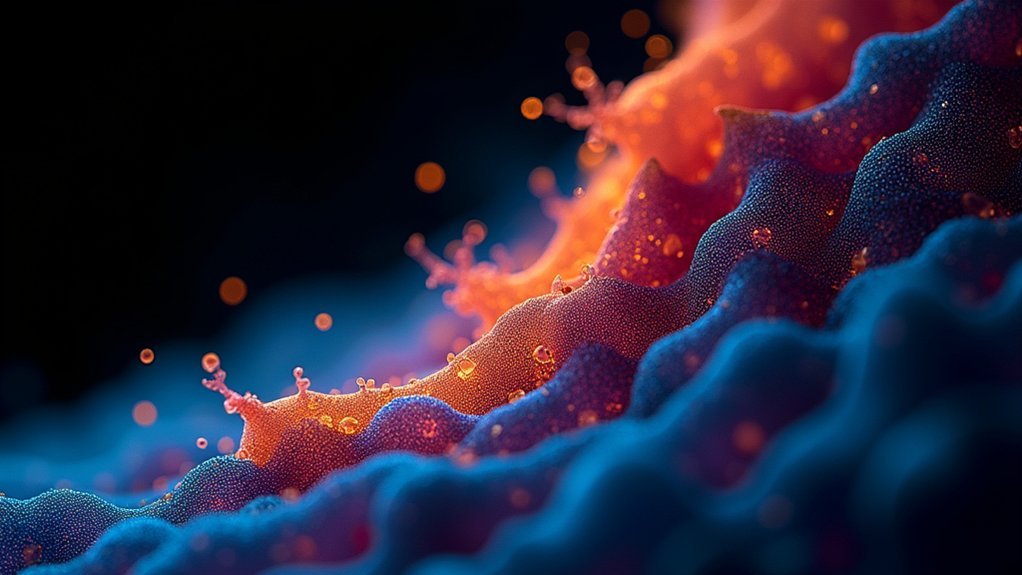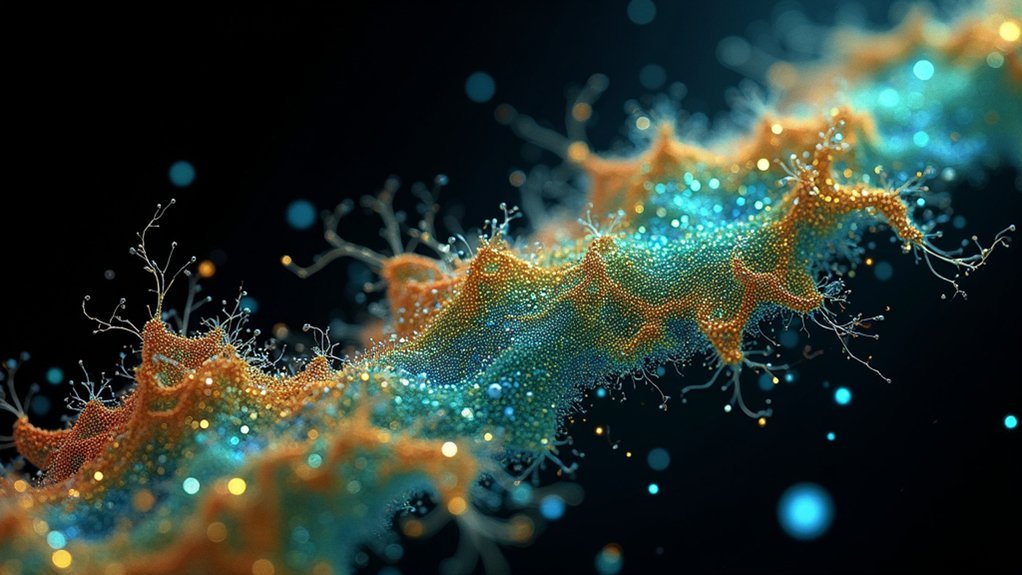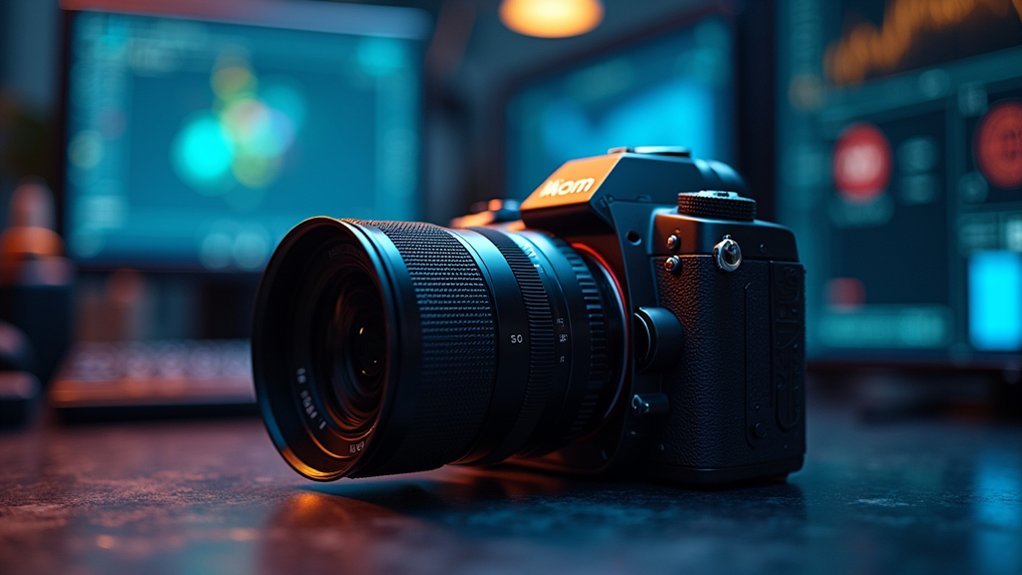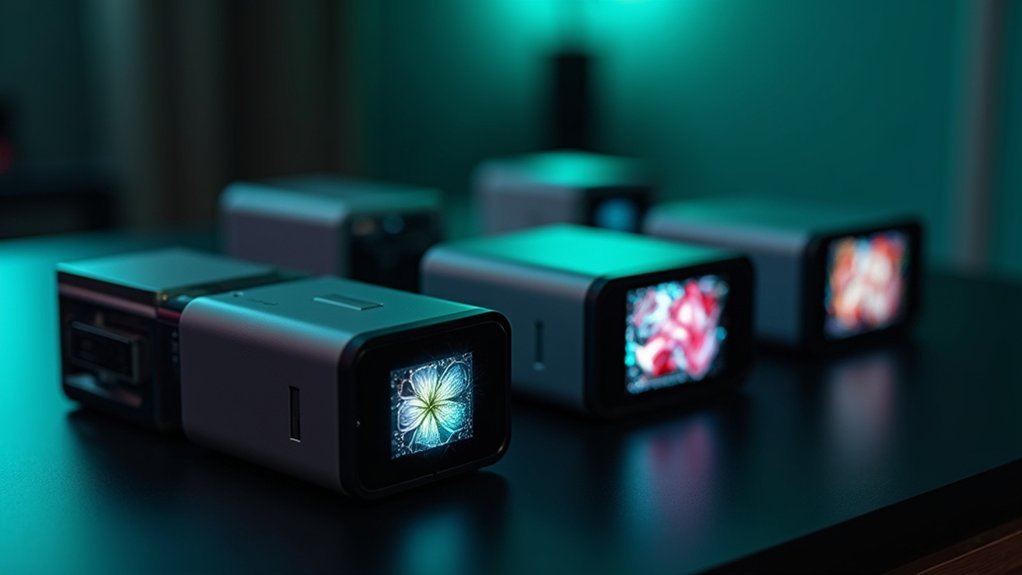Today’s top dark field image processing tools include Gatan Microscopy Suite for thorough analysis, neural network-based processors for enhanced resolution, GIMP with specialized plugins for cost-effective editing, specialized super-resolution software like HoloWorks, and multi-platform solutions such as ImageJ/Fiji for customizable workflows. Each option offers unique advantages for different microscopy applications and experience levels. The detailed capabilities of these powerful tools reveal why they’re transforming modern microscopy practices.
Gatan Microscopy Suite for Dark Field Image Analysis

Maneuvering the complexities of dark field microscopy demands powerful analytical tools, and the Gatan Microscopy Suite delivers precisely this capability. This integrated platform offers specialized processing tools that extract high-contrast images from label-free specimens with remarkable efficiency.
You’ll benefit from the EELS Advisor, which enhances compositional mapping through simulations specifically tailored for dark field techniques. The AutoFilter Suite streamlines your workflow by automating multi-element EELS and EFTEM data acquisition, saving valuable analysis time.
EELS Advisor delivers dark field-optimized compositional mapping while AutoFilter Suite accelerates multi-element acquisition for maximum efficiency.
For larger specimens, the DigitalMontage Software seamlessly stitches dark field images together, creating thorough high-resolution composites.
Additionally, Gatan’s STEM Imaging Systems, particularly the STEMx System, expand your capabilities with advanced 4D STEM diffraction studies, pushing the boundaries of what’s possible with dark field microscopy.
Advanced Neural Network Processing for Dark Field Microscopy
While specialized software suites provide robust foundations for dark field analysis, neural networks now represent the cutting edge of image processing technology.
You’ll find convolutional neural networks (CNNs) transforming dark-field illumination techniques by converting low-resolution images into super-resolution outputs with remarkable clarity.
The DAPD microscopy technique exemplifies this advancement, delivering a 2.8-fold improvement in spatial resolution through neural network processing. Pretrained CNNs efficiently generate high-quality images from single-frame inputs, eliminating the need for multiple exposures and enabling high-speed imaging.
These deep-learning algorithms excel at solving complex inverse problems in dark field imaging by incorporating simulated noise factors like additive white Gaussian noise. This creates more robust models capable of extracting finer details and enhancing contrast beyond conventional processing methods.
Open-Source Alternatives for Plasmonic Dark Field Imaging

Despite the prevalence of commercial solutions, open-source software offers remarkable capabilities for plasmonic dark-field imaging without the hefty price tags.
GIMP stands out with its versatile plugin support for astro imaging tasks like dust removal and star correction, making it ideal for gradient elimination and noise management.
You’ll find Deep Sky Stacker and Cyril particularly useful for stacking large datasets, considerably improving your final image quality.
For addressing the low SNR challenges inherent in label-free imaging, Astro denoise Pi and Topaz AI deliver sophisticated noise reduction without compromising detail.
Specialized Software for Label-Free Super-Resolution Techniques
Label-free super-resolution imaging demands specialized software tools designed for extracting maximum information from minimal signal data.
When you’re processing plasmonic dark-field images, deep-learning frameworks like CNNs transform low-resolution inputs into super-resolution outputs with remarkable efficiency.
The Advanced AutoFilter Suite offers automated multi-element EELS and EFTEM data acquisition, considerably streamlining your workflow.
For phase analysis, HoloWorks Software provides live phase image computation, essential for interpreting complex dark field outputs.
EELS Advisor enhances your compositional mapping accuracy through data simulation, improving result interpretation.
When working with large data sets, Latitude S and D tools standardize collection methods for cryo-EM samples, enabling high-throughput acquisition while maintaining low-dose conditions—crucial for preserving sample integrity during extended super-resolution imaging sessions.
Multi-Platform Image Processing Tools for STEM Dark Field Applications

Researchers have access to diverse image processing solutions across multiple platforms for STEM dark field applications. When working with scattered light data, you’ll find both open-source and commercial options that offer specialized functionality for enhancing contrast and reducing noise in dark field microscopy images.
- ImageJ/Fiji provides powerful customization through plugins and macros, making it a favorite among scientists for processing complex scattered light patterns in STEM imaging.
- GIMP offers extensive noise reduction tools through plugins that effectively clean up dark field images without losing critical details.
- Python’s scikit-image allows you to create custom algorithms for processing scattered light data, giving you complete control over your image analysis workflow.
For specialized applications, Darktable’s raw processing capabilities can optimize your dark field images by fine-tuning exposure settings.
Frequently Asked Questions
What Is the Darkfield Microscope Most Useful For?
You’ll find darkfield microscopy most useful for viewing transparent specimens without staining. It’s excellent for observing live bacteria, cellular processes, and small particles that appear bright against a dark background.
Which Technique Is Best for Image Processing?
For image processing, you’ll find DAPD most effective as it leverages CNNs to transform single-frame dark-field images into super-resolution outputs, enhancing spatial resolution 2.8 times while handling noise in low signal environments.
What Is an Image in Image Processing?
In image processing, an image is a two-dimensional array of pixels you’ll work with. Each pixel represents intensity or color values at specific locations, forming the digital representation you’re manipulating during processing tasks.
What Is the Application of Dark Field Microscope Wikipedia?
Wikipedia covers dark field microscopy’s applications in biology for viewing unstained specimens, nanotechnology for visualizing nanoparticles, and materials science for detecting defects. You’ll find it’s valued for revealing otherwise invisible structures.
In Summary
You’ve now explored the top dark field image processing tools available today. Whether you’re using Gatan’s commercial suite, neural network solutions, open-source alternatives, specialized label-free software, or multi-platform STEM applications, you’ll find options that fit your specific microscopy needs. Consider your budget, technical requirements, and workflow when choosing the right tool to enhance your dark field imaging capabilities.





Leave a Reply